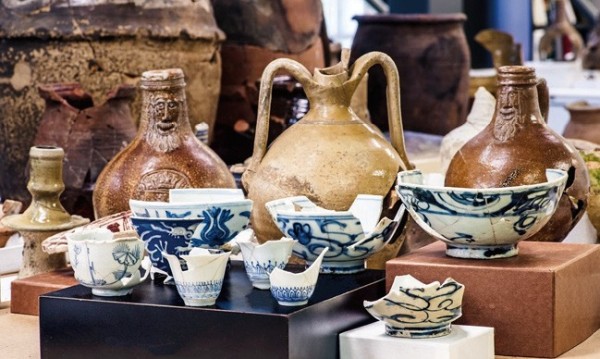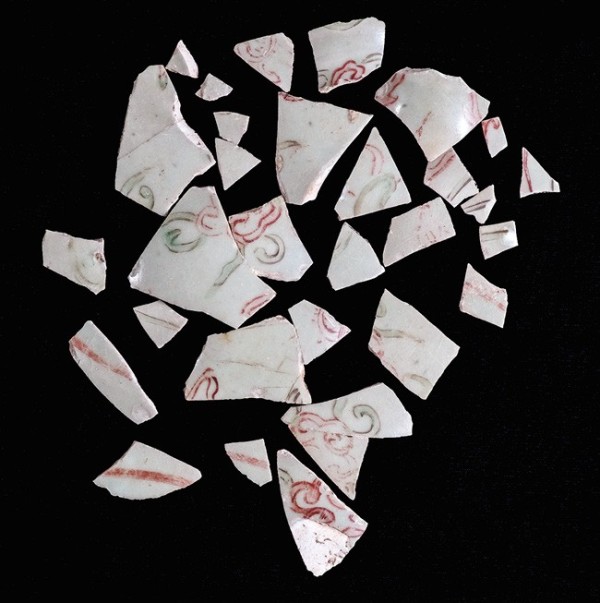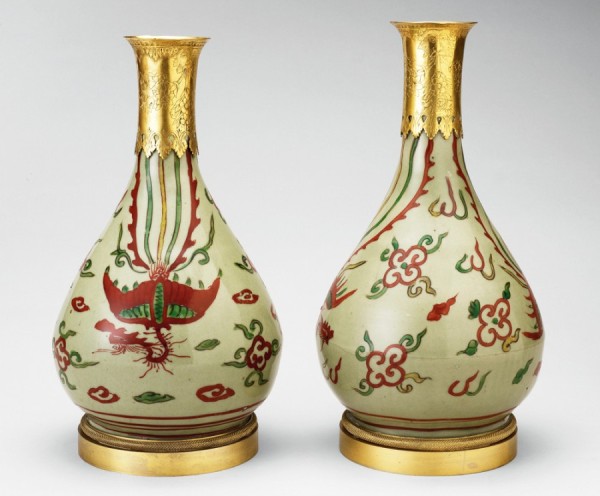
James Fort archaeological features and interpretations of structures superimposed on the modern-day landscape. (Courtesy, Jamestown Rediscovery Foundation; photo composition, Jamie May.)

A selection of the wide range of ceramics from England, Continental Europe, and China dating to 1600–1625 that have been recovered from James Fort. (Courtesy, Jamestown Rediscovery Foundation.)

Bottle fragments, Southern China, 1575–1625. Hard-paste porcelain. (Courtesy, Jamestown Rediscovery Foundation.)

Merry Outlaw and Ron Fuchs looking at fragments from the bottle. (Photo, Robert Hunter.)

Bottles, Southern China, 1575–1625. Hard-paste porcelain. H. 17 3/8". (Royal Collection Trust / © Her Majesty Queen Elizabeth II 2021.) The gilt bronze mounts were added in Europe in two phases, in 1675–1700 and 1800–1820.

Bottle fragments showing the tail feathers and neck of the fenghuang, Southern China, 1575–1625. Hard-paste porcelain. (Courtesy, Jamestown Rediscovery Foundation.)

Christian Richter (1678–1732), Portrait of Queen Mary II, after 1704. Watercolor on vellum. H. of portrait 2 1/2". (Private collection; photo, Robert Hunter.)

Isaac Oliver (1565–1617), Portrait of Robert Cecil, 1st Earl of Salisbury, ca. 1600. Tempera on vellum. H. of portrait 2". (© Burghley House Preservation Trust Limited.)
